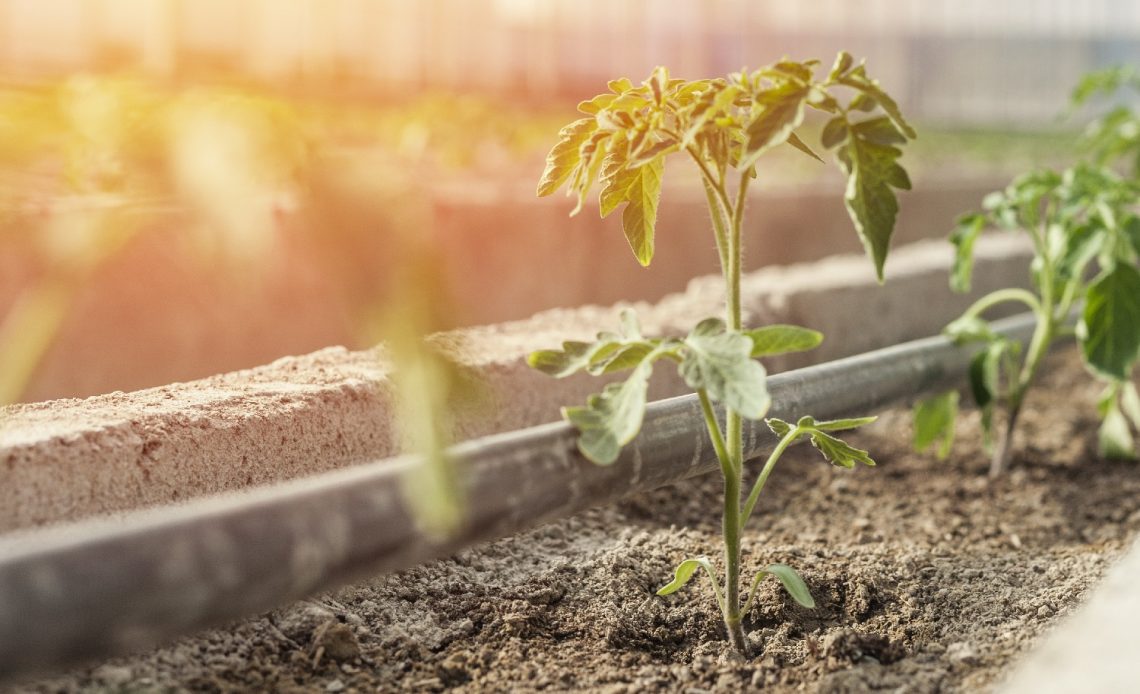

We’re here to help! Wild Yards is a completely free website that is 100% dedicated to helping you create a wildlife-friendly, sustainable yard. Read more
WildYards is reader-supported. When you buy a product through a link on our site, we may earn a comission. Every product is independently selected by our (obsessive) editors and our reviews are unbiased and objective. Read more about our mission or our privacy policy.
The best thing about gardening is getting to enjoy the fruits of your labor, and nothing is better than biting into a ripe, juicy tomato straight off the vine. Whether you grow tomatoes to make your own tomato sauces, or whether you simply enjoy snacking on them, these versatile garden favorites are so rewarding to grow. If you’re thinking of starting your tomatoes indoors this season, you may be wondering when to transplant tomato seedlings so they survive in the garden.
It’s best to transplant tomato seedlings in late spring. Be sure to start your tomato seeds 2 to 4 weeks before the last frost of the season so that the seedlings are mature enough to be moved to their permanent home in your garden. Tomato seedlings should be 3 to 4 inches tall and have several sets of true leaves when transplanted.
How to start tomato plants in pots indoors
For best results, start your tomato plants indoors 2 to 4 weeks before the last scheduled frost of the season. Start by filling small pots with a 1:1 mixture of vegetable soil and soil from your garden. Incorporating the soil from your vegetable beds into your seedlings’ potting mix will help them adapt when it comes time to transplant them to your garden.
Sow 1 to 3 tomato seeds per pot by placing them ½ inch deep in the soil. Use the tip of your finger to cover them and tamp the soil gently, removing any air pockets. Water the seedlings well, and place them on a sunny windowsill to stay warm.
Tomato seedlings usually sprout up fast. You’ll probably see shoots within 3 or 4 days, though it can take up to 10 for seeds to germinate. Check the soil regularly and be sure to keep the seeds moist, but not soggy. Seeds must stay hydrated to sprout.
Which pots should you use to sow your tomato seeds?
It can be tempting to use plastic pots to start your seeds because they’re so sturdy, and you can save them to use during the next growing season. But this can actually work against you when it comes time to transplant your tomato seedlings. In order to remove the seedlings from the plastic pots, the pots must either be torn, rendering them unusable, or you must shake the seedlings out risking damage to their roots and foliage. Neither of these situations is ideal.
For best results, sow your tomato seeds in paper cups, peat seed pots, or homemade newspaper seed pots. These biodegradable materials are much easier to handle and safer for use in the garden. You can cut the pots away, rather than having to jostle the seedlings out of them. The less you have to handle the seedlings, the better their chances of surviving transplantation.
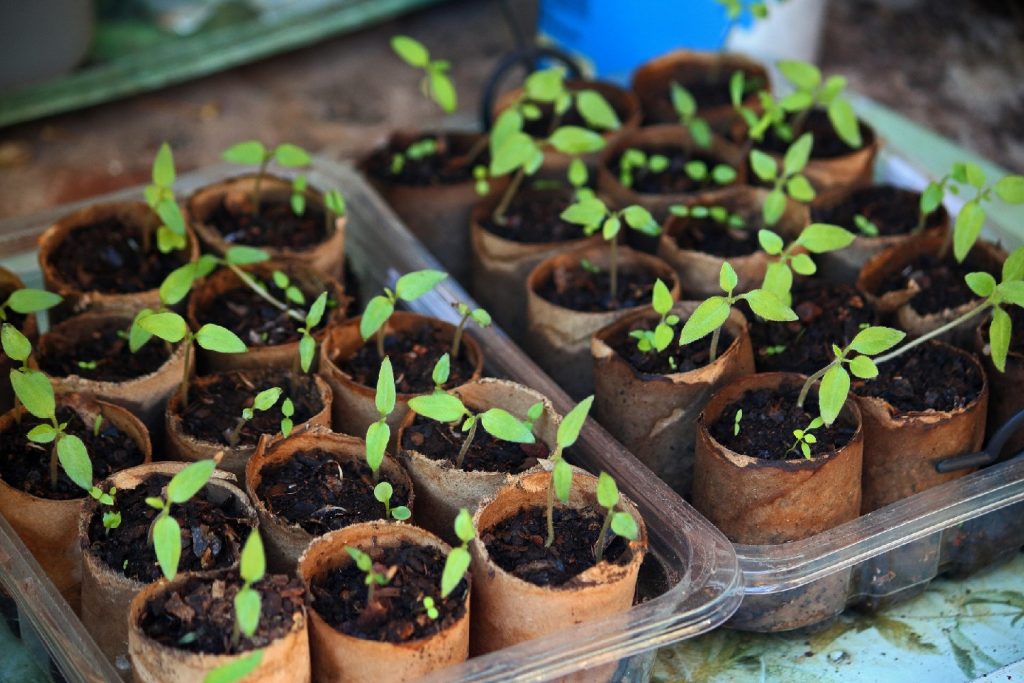
What are the tomato plant’s growing requirements?
Tomatoes need plenty of sunlight to produce fruit. If you live in a cooler growing zone, you can plant your tomatoes in full sun. But, if you live in a warmer region, you’ll need to plant your tomatoes where they can get some shade in the afternoon.
Tomatoes prefer to grow in sandy and loamy soils that have a pH of 6 to 6.8. They like acidic soils best, so if your soil is too alkaline, you may need to amend it with some sphagnum peat moss before planting to lower the pH. Sphagnum moss is loaded with good bacteria that will keep your tomatoes healthy.
Plant your tomatoes in well-drained soil. This is critical as muddy, soggy soils can lead to root rot, or cause growing tomatoes to burst. If your soil tends to hold onto too much moisture, be sure to amend it with sand to make it more porous. Consider mixing up a batch of lavender potting soil to combine with your native soil. This will create a better base for your tomato plants to grow.
When to transplant tomato seedlings to your garden
It’s best to transplant your tomato seedlings in April or May, the latter part of the spring. Ideally, temperatures should be at or above 60 degrees Fahrenheit. While tomato plants can survive temperatures in the 40s and 50s, they don’t like being so chilly. Moving your tomato plants outside when temperatures are too cool may stunt their growth.
Making sure your garden is warm enough for your tomato seedlings is critical, but ensuring the seedlings themselves are prepared for the move is just as important. If you transplant your seedlings too early, they may not be strong enough to survive outside. But, if you wait too long and transplant them too late, the seedlings can become root bound and may not recover from transplantation.
Keep an eye on your seedlings. Once they start producing true leaves, which are the same shape as adult leaves, it’s time to prepare them for transplanting. True leaves on tomato plants will be lobed, as opposed to the oval shape of the seed leaves. Once seedlings have at least 2 pairs of true leaves and have grown at least 3 to 4 inches tall, they’re ready to be moved to the garden.
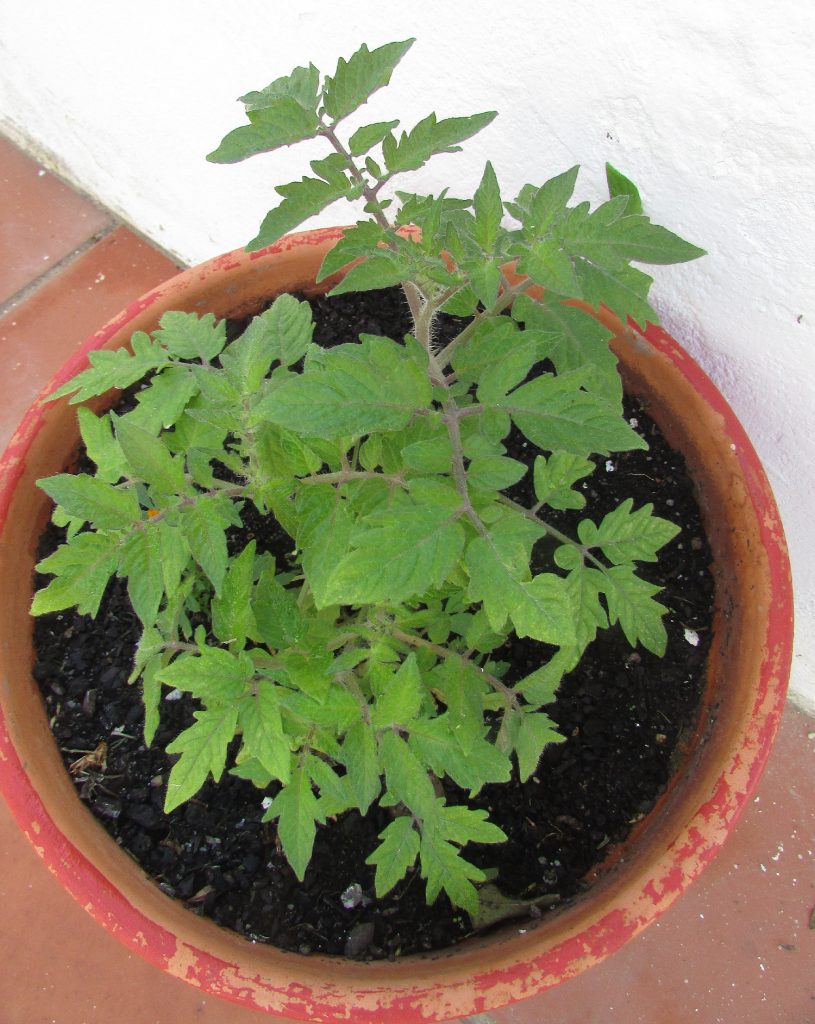
What’s the best way to transplant tomato seedlings into your garden?
Tomatoes are pretty easy to transplant, especially compared to squash seedlings. When transplanting tomato seedlings, it’s important to use bare hands. Gardening gloves are bulky, and they make it difficult to feel what’s going on. It’s easy to damage the seedlings accidentally when wearing gloves, so ditch them when transplanting your baby tomato plants.
Start by digging a hole twice as big as the tomato seedling. Holes should be 6 to 8 inches deep. Use a pocket knife to cut the paper seed pot away from the seedling. If you used peat pots, simply remove the bottom so the roots can reach the soil. Once the seedling is ready, situate it in the hole so the roots will be well-covered. Backfill the soil with your hand tamping around the seedling gently to remove air pockets.
Water your freshly-planted tomato seedlings well to help the soil settle. And be sure to keep the soil moist for the first few weeks because young plants will die if they dry out. You may need to use lawn clippings or straw as a mulch to help the seedlings retain moisture as they grow. Applying a mulch also helps with weed control, making your job as a gardener much easier.
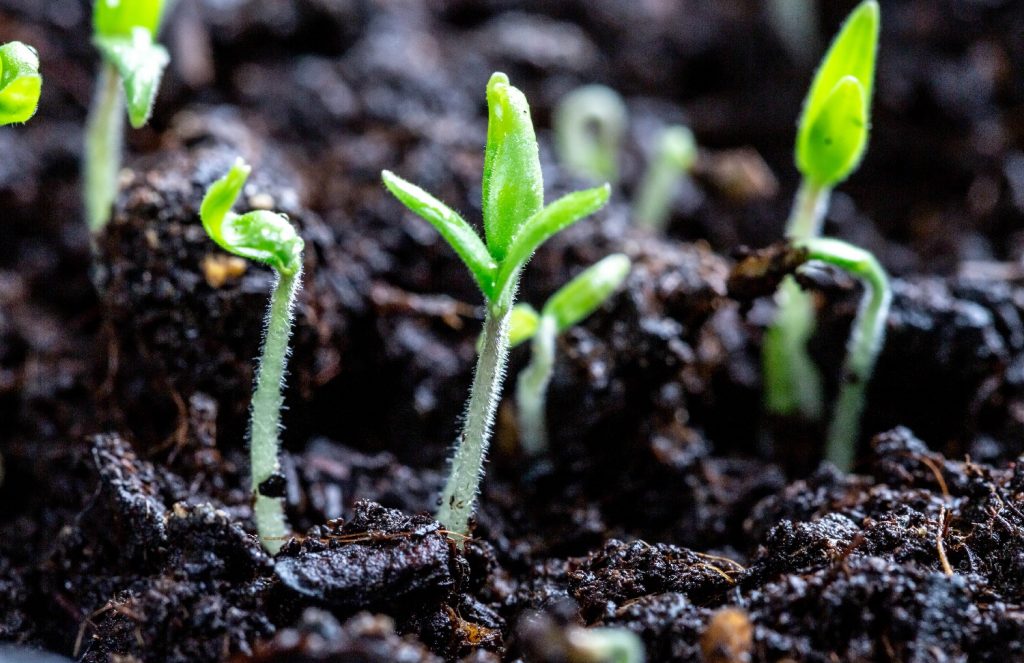
Do tomato seedlings grow better in raised beds and pots than straight in the ground?
The answer to this question depends on your native soil. If the soil in your backyard is clay-rich or if it just doesn’t drain well, then your tomato plants will be much better off grown in raised beds or pots. Raised beds and pots allow excess water to drain quickly so your tomato plants don’t develop root rot. You can line the bottom of your garden beds with a layer of gravel to improve drainage even more.
Raised beds are generally filled with bagged soil, which means there are naturally fewer weeds in raised beds than in-ground vegetable patches. This saves you time and labor in the long run, and it also prevents your tomato seedlings from competing with other plants for valuable nutrition.
Our soil recipe for raised garden beds provides the perfect base for your tomato plants to grow in. This soil drains well and has just the right amount of organic matter to meet the nutritional needs of your tomato plants. While this soil has a neutral pH that’s suitable for most garden vegetables, it can be amended with sphagnum moss to make it more acidic. Growing your tomatoes in raised garden beds makes it much easier to add other amendments as well (more on that in a minute).
Can you transplant adult tomato plants mid-season?
Maybe you moved your tomato seedlings to bigger pots as you prepared your garden, and now you’re finally ready to move them. Or maybe your transplanted tomatoes grew bigger than expected and no longer have enough space to branch out. Is it safe to transplant mature tomato plants in the middle of the growing season? The answer is yes, as long as you transplant them correctly.
Transplanting adult tomato plants is basically the same as transplanting tomato seedlings — except this time, you can use gardening gloves because adult plants are tougher than seedlings. Start by digging a hole twice as large as the tomato plant. You’ll need to dig several inches deeper than the roots are long so they have loose soil to grow into.
Remove the tomato from its pot by tapping the base of the pot gently against a hard surface. Grasp the base of the plant and, careful to support the roots, gently wriggle the plant out of the pot. Place the tomato in the hole so the root collar is level with the surrounding soil, then use your hand or a small trowel to backfill the hole. Tamp the soil down to eliminate air pockets and water the soil well.
Adult tomato plants are usually hardy enough to survive transplanting, however, the process can still stress the plants. Be sure to water them well for the next few days to support the plants as they adjust.
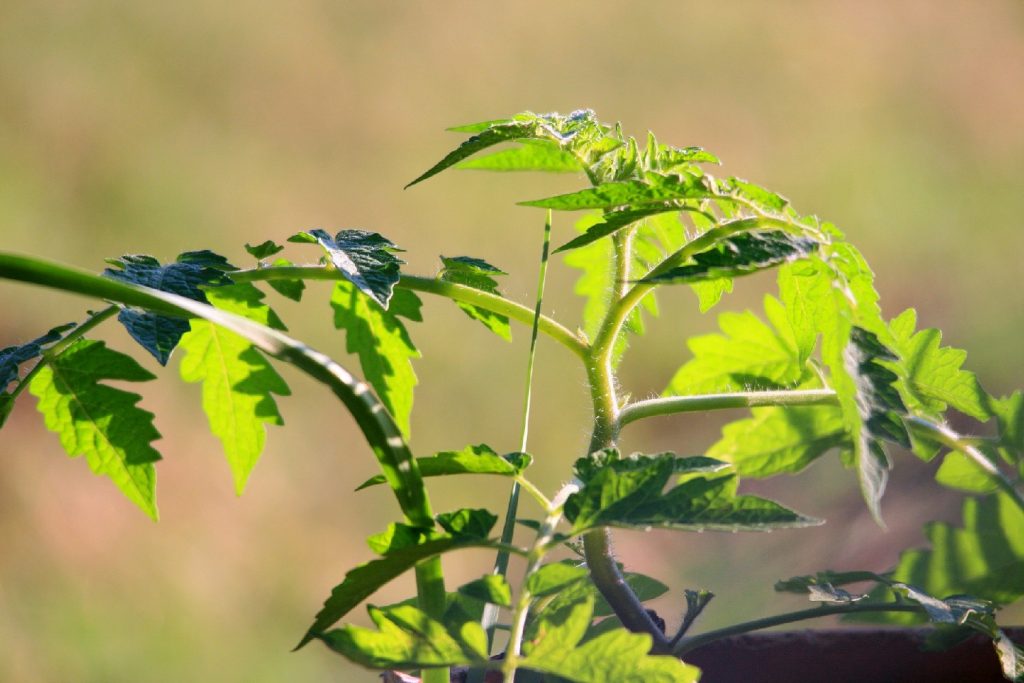
How long does it take for tomato plants to produce fruit?
When grown in ideal conditions, tomatoes can be harvested from plants anywhere from 110 to 156 days after germination. Tomatoes are prolific producers. While most tomato plants grown in backyard gardens will only produce 20 or 30 tomatoes, some plants are capable of producing many times that. Cherry tomato plants, in particular, have been known to grow upwards of 100 tomatoes in a single growing season.
Keep this in mind when planting tomato seedlings. If you only want a few tomatoes to snack on, 1 or 2 plants should be more than enough to keep you satisfied. But if you want to grow tomatoes to make sauces and salsas, and to share with your family and friends, consider growing a row of 5 to 10 tomatoes to make sure you have enough to go around.
Should you fertilize your young tomato plants?
Tomatoes are heavy feeders. The more nutrients they have access to, the more tomatoes they can make. So be sure to amend your garden’s soil with a few of the tomato plant’s favorite all-natural fertilizers.
- Coffee grounds are rich in nitrogen, potassium, and calcium, three minerals that tomatoes rely on to stay healthy. Like roses, tomatoes benefit from the nutrient boost and burst of acidity that used coffee grounds provide.
- Worm castings are also highly beneficial for tomatoes. Worms take the nutrients in the soil and turn them into a bioavailable fertilizer that’s easier for tomatoes, and other plants, to absorb.
- Manure is full of nitrogen and trace minerals that tomatoes need to grow well. While fresh manure can kill plants, manure that has been aged properly is perfect for preparing your garden’s soil for tomatoes because it prevents compaction and improves drainage.
- Tums are an excellent source of calcium, and tomatoes need plenty of calcium to produce the best fruit possible. If the foliage on your tomato plants is curling or cupping, and if new fruits are mushy, deformed, and anemic looking, give them a Tums tablet. These are signs of calcium deficiency that Tums can quickly nip in the bud.
Of course, you can always support your tomato plants by giving them a heaping helping of homemade compost. A combination of nutrient-rich brown matter and green matter, compost is an excellent source of carbon, nitrogen, and other vitamins and minerals that degrade slowly, providing your tomato plants with nutrition that can last for months.
A few tips for growing healthy tomato plants
To ensure your tomato seedlings grow sturdy stems, place them several inches below fluorescent plant lights, raising the lights as the plants get taller. This will prevent them from becoming spindly. You can promote new growth on older plants by pinching off “suckers”, or leaves that grow in the center of the joints where branches meet the main stem. And you can keep insects off your tomatoes naturally by using homemade insecticides and growing oregano, basil, and dill as companion plants.
Tomatoes are easy to grow, easy to transplant, and easy to care for. They have the potential to produce dozens of fruits and require very little effort on your part. With patience, you can transplant your tomato seedlings successfully and enjoy an abundance of delicious tomatoes come harvest time.
